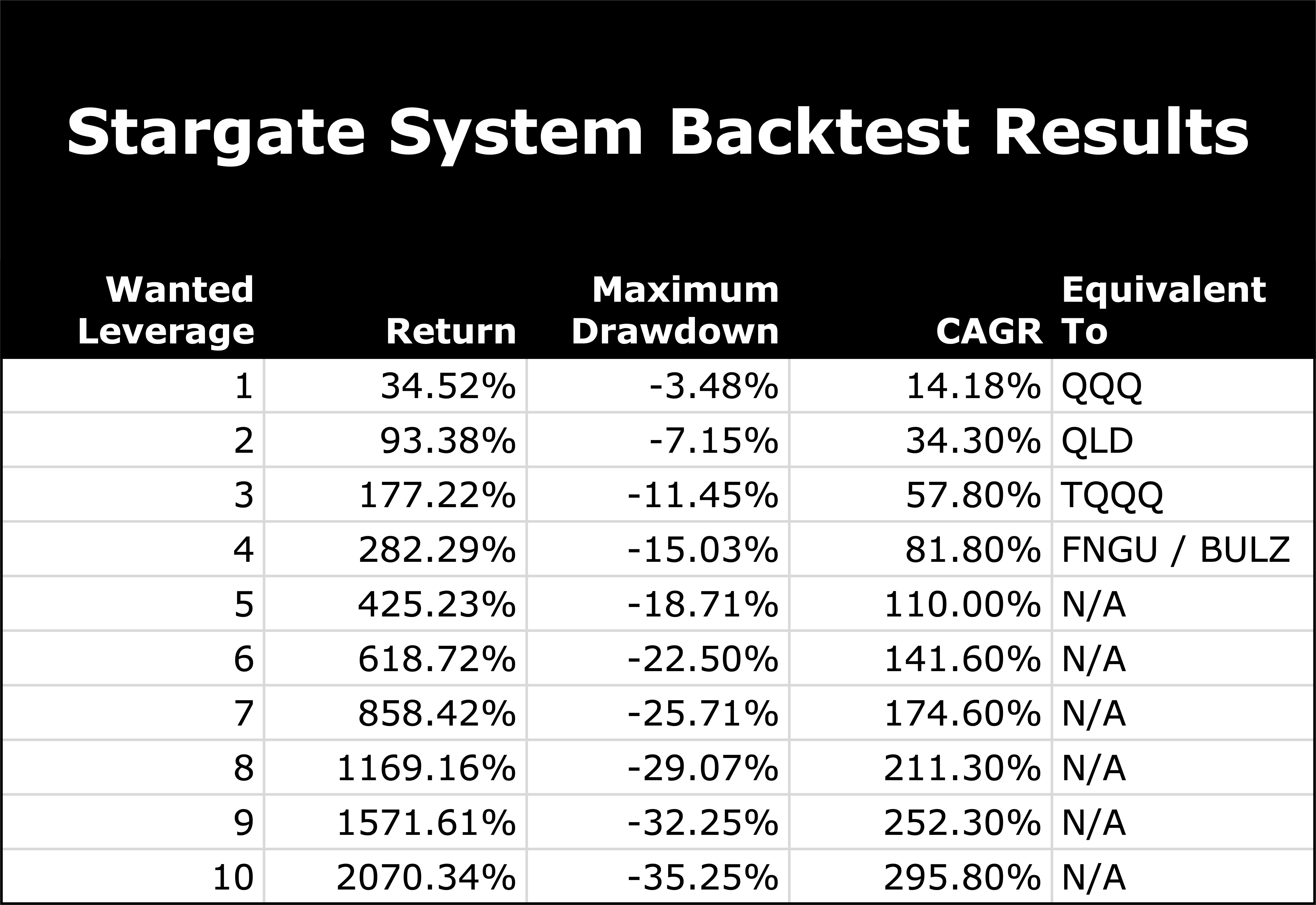RegentQuant System Stargate
$100.0000
At the close of February 19, 2025
System Description
The system utilizes quantitative models to predict market movements for the next trading day (T+1) and is based on options trading. Upon the activation of a trading signal, the system will purchase an at-the-money (ATM) call option on QQQ with an expiration date set for the next trading day.
Compounded Version Return (Target Leverage: 6x)
Compounded growth of system stargate.
Cumulative Profit (Single Contract)
This chart tracks the cumulative net gains from trading a single option contract, providing insight into overall performance and growth over time.
Breakeven vs. Profit Analysis
This chart presents the scatterplot relationship between options breakeven and profit, with the most recent 10 trades highlighted.
Breakeven vs. Profit (%)
Breakeven vs. Profit ($)
Maximum Drawdown (Single Contract)
This chart illustrates the largest peak-to-trough decline for a single option contract, showing the maximum potential loss from the highest equity point.
Daily Option Breakeven (%)
This chart tracks the daily breakeven percentage for options, showing the price required to cover total costs, including premiums. A 0% breakeven indicates no option activity on those days.
Backtest Results

Win-Loss Amount Ratio
The win/loss amount ratio measures performance by comparing cumulative gains to cumulative losses, indicating profitability and risk efficiency. A win/loss amount ratio of 2 means that the total gains are 2 times greater than the total losses.
Trailing 50 Trades: Win Rate
This chart tracks the percentage of winning trades over the last 50 trades, providing insight into recent performance consistency.
Trailing 50 Winning Trades: Average Win
This chart displays the average profit per winning trade within the last 50 winning trades, reflecting typical gains on successful entries.
Trailing 50 Losing Trades: Average Loss
This chart shows the average loss per losing trade within the last 50 losing trades, providing insight into typical downside risk.